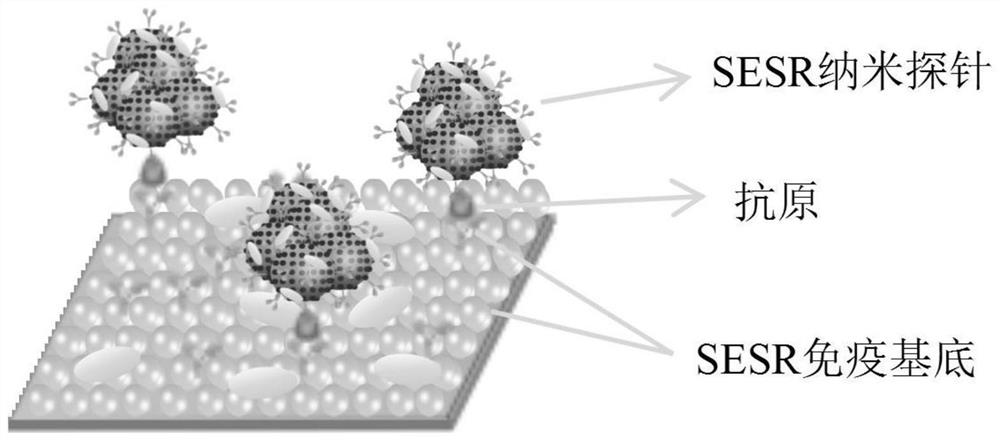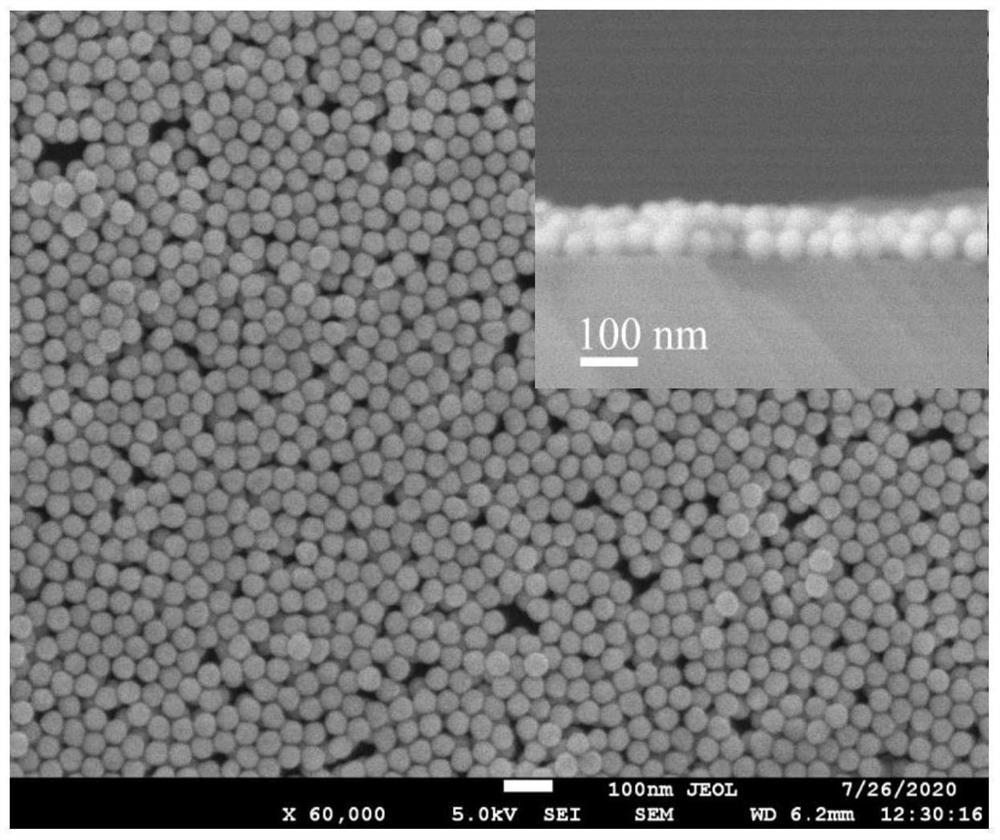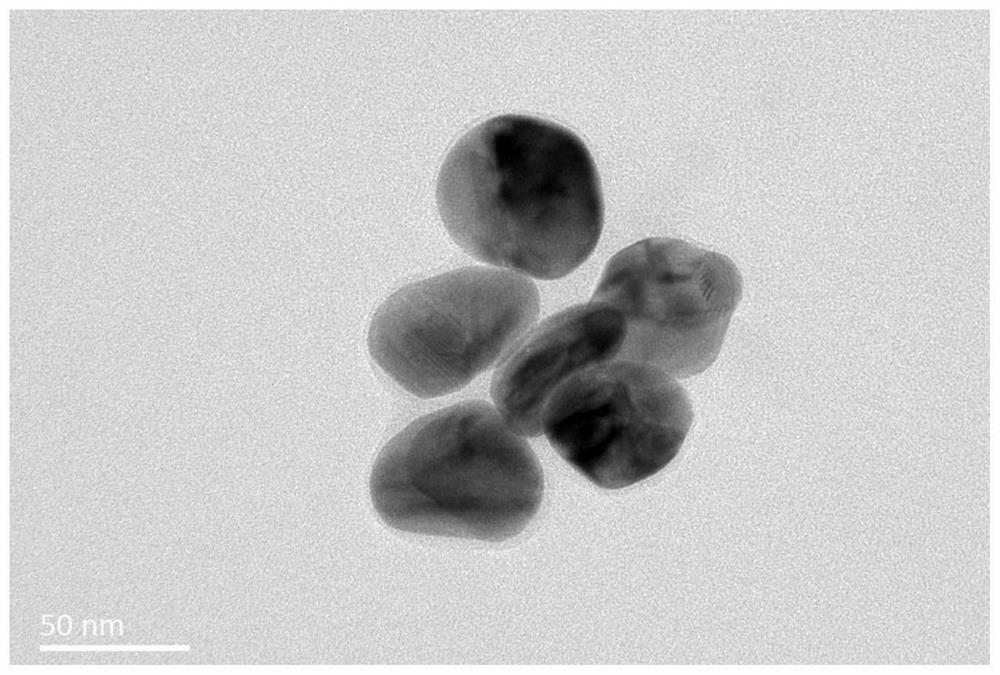Ultra-sensitive biochip based on surface enhanced Raman scattering and preparation method thereof
A surface-enhanced Raman and biochip technology, applied in Raman scattering, material excitation analysis, instruments, etc., can solve the problems of poor repeatability and low detection sensitivity of SERS immune substrates, achieve uniform distribution, improve detection uniformity, and enhance The effect of sensitivity
- Summary
- Abstract
- Description
- Claims
- Application Information
AI Technical Summary
Problems solved by technology
Method used
Image
Examples
Embodiment 1
[0035] Example 1: Preparation of SERS immune substrate
[0036] (1) Preparation of Au NPs solution:
[0037] 0.985mg chloroauric acid (HAuCl 4 ) was mixed with 0.365g cetyltrimethylammonium bromide (CTAB), and then the volume was adjusted to 10mL with deionized water, and then 0.6mL, 10×10 -3 M sodium borohydride solution (NaBH 4 ), stirred for 2 minutes, and placed at 27° C. for 3 hours to ensure that the reaction was complete to obtain a CTAB-coated gold nanocluster solution. 2mL, 200×10 - 3 M cetyltrimethylammonium chloride solution (CTAC) with 1.5mL, 100×10 -3 Mix M ascorbic acid solution (AA) and 50 μL CTAB-coated gold nanocluster solution, and then add 2 mL, 0.5×10 -3 M HAuCl 4 solution, reacted at 27°C for 15 minutes, and then centrifuged at 14500rpm for 30 minutes to resuspend in 1mL, 20×10 -3 In the MCTAC solution, a gold nanoparticle seed solution with a particle size of 10 nm was obtained. 2mL, 100×10 -3 MCTAC solution with 130 μL, 10×10 -3 The MAA soluti...
Embodiment 2
[0042] Embodiment 2: Preparation of SERS immunoprobe solution
[0043] (1) Preparation of Ag NPs solution:
[0044] Dissolve 0.02536g of ascorbic acid and 0.21175g of trisodium citrate in 240mL of deionized water, then add 2.4mL of 0.1M silver nitrate solution (AgNO 3 ), stirred at 30°C for 15 minutes, and aged at 100°C for 2 hours to obtain the Ag NPs solution.
[0045] (2) Preparation of Ag@4MBA solution:
[0046] Add 200 μL, 0.1 mM ethanol solution of p-mercaptobenzoic acid (4MBA) to 1 mL of the AgNPs solution obtained in step (1), stir at 30 °C for 12 h, centrifuge at 8500 rpm for 15 minutes and disperse in 1 mL of PBS to obtain 4MBA-modified AgNPs NPs solution (Ag@4MBA);
[0047] (3) Preparation of SERS immunoprobe solution:
[0048] Add 30 μL, 10 μg / mL SARS-CoV-2 spike antibody solution in PBS to 1 mL of the Ag@4MBA solution in step (2), incubate at 4°C for 6 h, then centrifuge at 6500 rpm for 15 minutes and disperse in 1 mL of PBS. Finally, 50 μL of 5% by mass BSA ...
Embodiment 3
[0049] Embodiment 3: Preparation and detection of SARS-CoV-2 ultrasensitive biochip
[0050] (1) Incubation of the target antigen:
[0051] To the surface of the SERS immune substrate obtained in Example 1, 10 μL of the SARS-CoV-2 spike antigen with a concentration of 1fg / mL, 10fg / mL, 100fg / mL, 1pg / mL, 10pg / mL, 100pg / mL and 1ng / mL was added dropwise. The PBS solution of protein and the PBS solution of BSA in the control group were incubated at 37°C for 2.5h, and then washed 3 times with PBS and a large amount of deionized water.
[0052] (2) Preparation of SARS-CoV-2 ultrasensitive biochip
[0053] Add 15 μL of the SERS immunoprobe solution obtained in Example 2 dropwise to the substrate obtained in step (1), incubate at 4°C for 2.5 hours, and then wash with PBS and deionized water 3 times to obtain a SARS-CoV-2 ultrasensitive biological chip.
[0054] (3) Detection of SARS-CoV-2 ultrasensitive biochip
[0055] Place the SARS-CoV-2 ultra-sensitive biochip obtained in step ...
PUM
| Property | Measurement | Unit |
|---|---|---|
| Particle size | aaaaa | aaaaa |
| Particle size | aaaaa | aaaaa |
Abstract
Description
Claims
Application Information
 Login to View More
Login to View More - R&D
- Intellectual Property
- Life Sciences
- Materials
- Tech Scout
- Unparalleled Data Quality
- Higher Quality Content
- 60% Fewer Hallucinations
Browse by: Latest US Patents, China's latest patents, Technical Efficacy Thesaurus, Application Domain, Technology Topic, Popular Technical Reports.
© 2025 PatSnap. All rights reserved.Legal|Privacy policy|Modern Slavery Act Transparency Statement|Sitemap|About US| Contact US: help@patsnap.com



